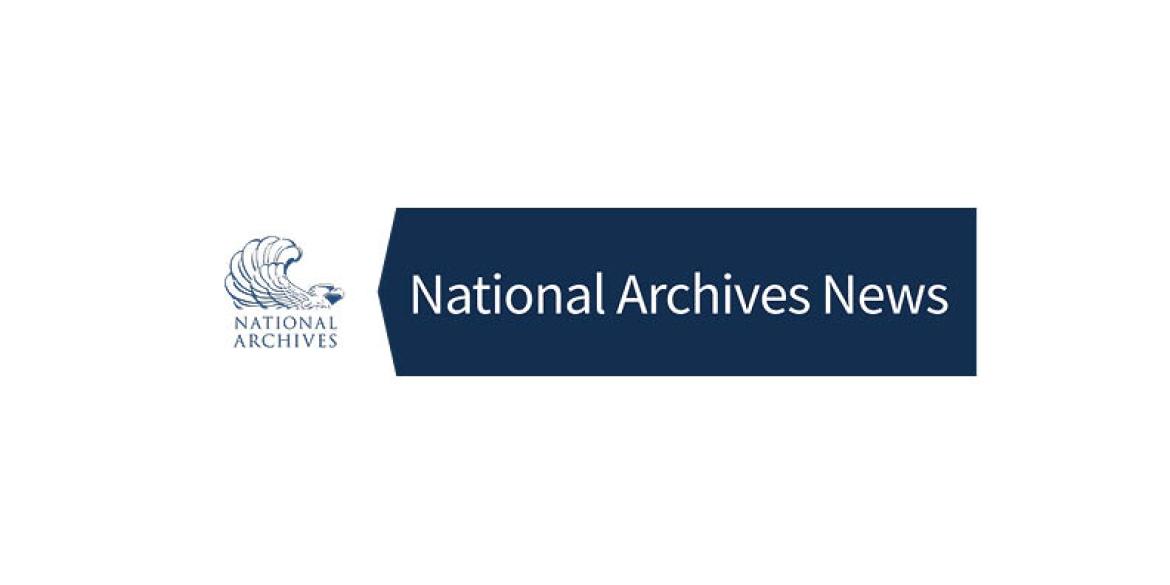
Conserving a Legacy of Freedom: Preparing General Order No. 3 for Public Display
By Mary Ryan
WASHINGTON, DC
This Juneteenth holiday, visitors to the National Archives in Washington, DC, will have the opportunity to see the original manuscript of the Army order issued by U.S. Maj. Gen. Gordon Granger on June 19, 1865, in Galveston, TX. The first sentence of the order declares, “The people of Texas are informed that, in accordance with a proclamation from the Executive of the United States, all slaves are free.”
The date—June 19, 1865—became known as “Juneteenth,” and the African American community in Texas long celebrated it as Emancipation Day or Freedom Day. Today Juneteenth is a federal holiday celebrated across the country.
Printed versions of the order have been available since it was first issued. Prompted by a staff inquiry in June 2020 about the original manuscript, an archivist located the original General Order No. 3 in the National Archives in Washington, DC.
The significance of the manuscript and heightened public interest in it led to the decision to display the order within a few weeks of the discovery so that the public might see it for themselves. Before any exhibition could happen, the document first had to go to the National Archives Conservation Lab for evaluation and treatment.
The order is written across two pages in a bound ledger, which was in poor condition. The cover boards and several sections had become detached, and General Order No. 3 was on the first page of the first section.
Because exhibit preparation had to be done quickly, and that section was already detached, the exhibitions conservator determined that it would make the most sense to display the first section on its own, separate from the rest of the ledger.
After minor paper repairs to reinforce vulnerable edges and mend small tears, the initial exhibit took place in June 2021, and each June since then the National Archives has displayed General Order No. 3.
After the success of the first display, the National Archives made plans for an annual Juneteenth observance to display both General Order No. 3 and the Emancipation Proclamation. In light of the document’s new prominence in the Archives’ exhibition program, the conservation team revisited the concept and the logistics of how to exhibit General Order No. 3.
After careful consideration, conservators decided on full conservation treatment of the entire volume as a long-term strategy for its preservation and display.
Before beginning work, the conservation team became familiar with how government ledgers were created and used. Military orders were originally written as entries in ledgers, often referred to as order books. These order books were collected by the War Department in Washington, DC, along with other records related to various Army commands. In 1866 Congress passed a resolution to publish Union and Confederate Army records. After the Government Printing Office printed selected records, the ledgers were taken apart and bound into new ledgers in the late 19th and early 20th centuries.
“The ledger containing General Order No. 3 was a sammelband, which is a book made up of several separate printed or manuscript pages that are later bound together,” explained Sonya Barron, a book conservator at the National Archives who worked on the volume.
The resulting volume combined sections that differ in size, thickness, page format, and paper. The Juneteenth order was bound with other general orders issued in the U.S. Army’s District of Texas between January and July of 1865.
The first step in treatment for General Order No. 3’s volume was to lift the leather and the endpapers from the boards and remove the leather spine piece. Barron then softened and removed the adhesive on the spine. After mending the pages and the folio folds with tissue and wheat starch paste, she reinforced existing sewing with a vegetable-fiber tape. She then resewed the detached sections to the rest of the book.
Attention then turned to the spine of the book. About two-thirds of the original spine could be reattached, so Barron used acid-neutral tissue lined with cotton to provide a strong support. The reconstructed spine was more flexible and allowed for gentler, easier opening of the volume.
After more than 100 hours of complex treatment in the conservation lab, the newly restored volume was ready for public display along with the Emancipation Proclamation between June 18 and 20, 2022. The two documents were again displayed for Juneteenth in 2023 in the Rotunda Galleries of the National Archives Building.
The project to treat and display General Order No. 3 exemplifies the National Archives’ mission to both preserve and make accessible the historical records of our nation.
"It was an honor and a great privilege to work on a document that has such tremendous significance to so many people,” said Barron. “I feel incredibly lucky that I got a chance to be a part of helping someone have a deep, meaningful experience when they visit the National Archives. This is going to inspire me for many years to come."
The entire volume, opened to General Order No. 3 on its first page, will be on display June 18–20, 2024, with special extended exhibit hours of 10 a.m. to 7 p.m.
